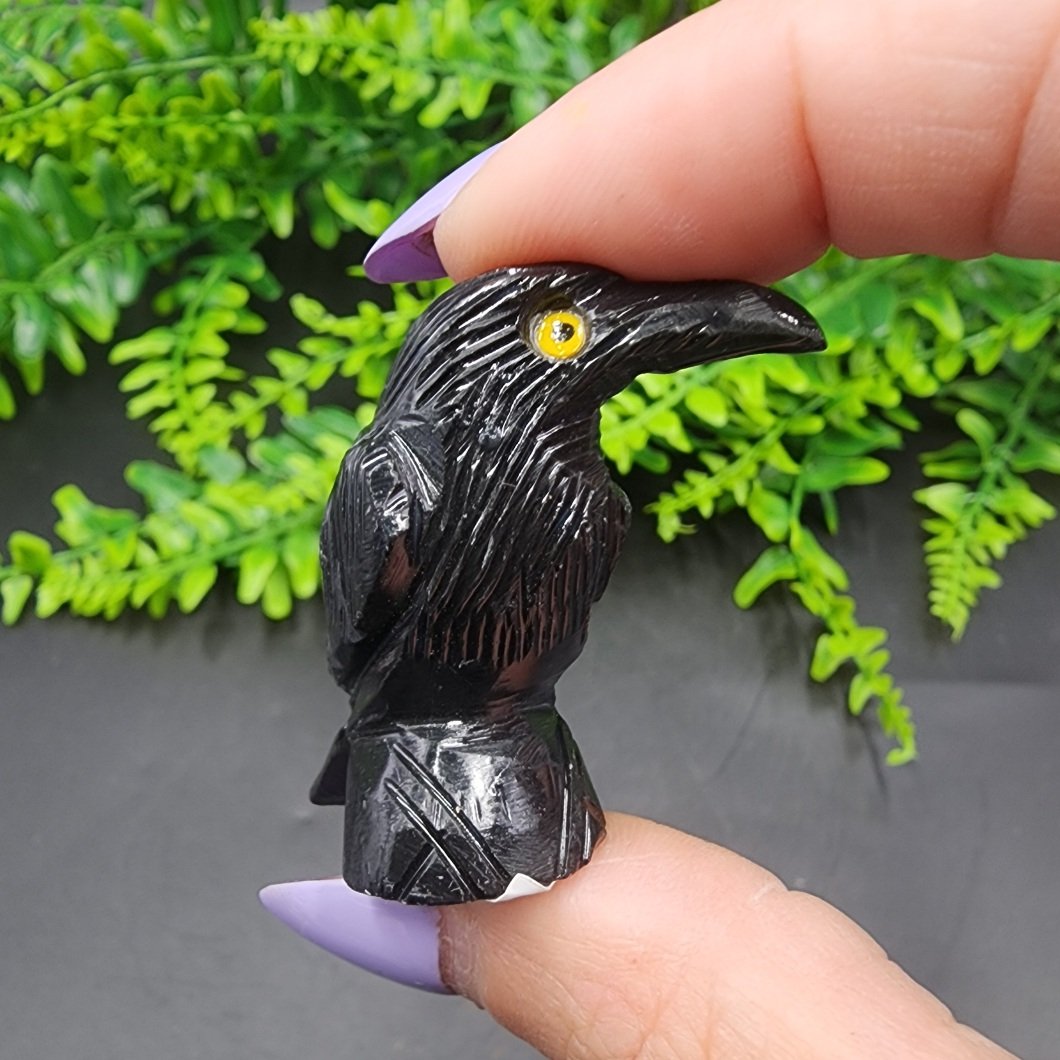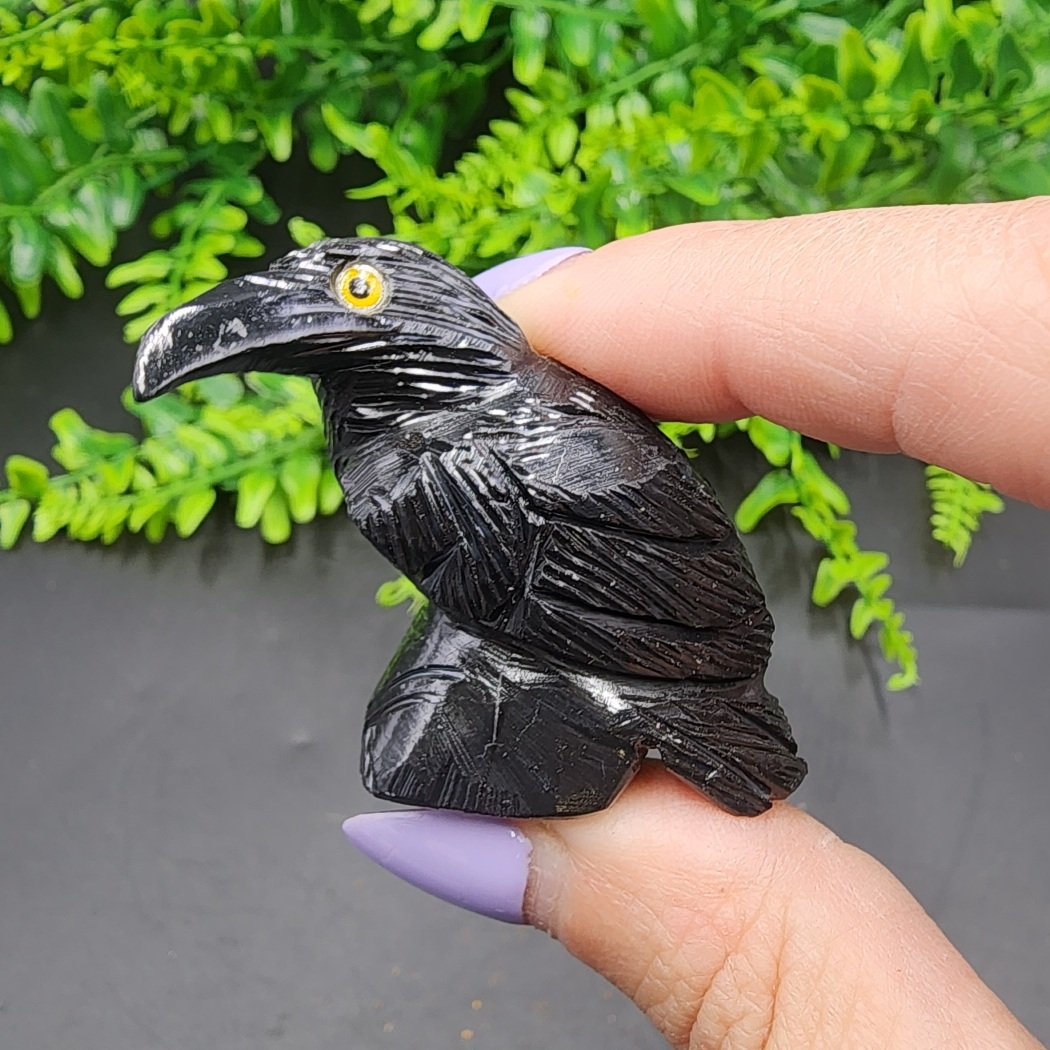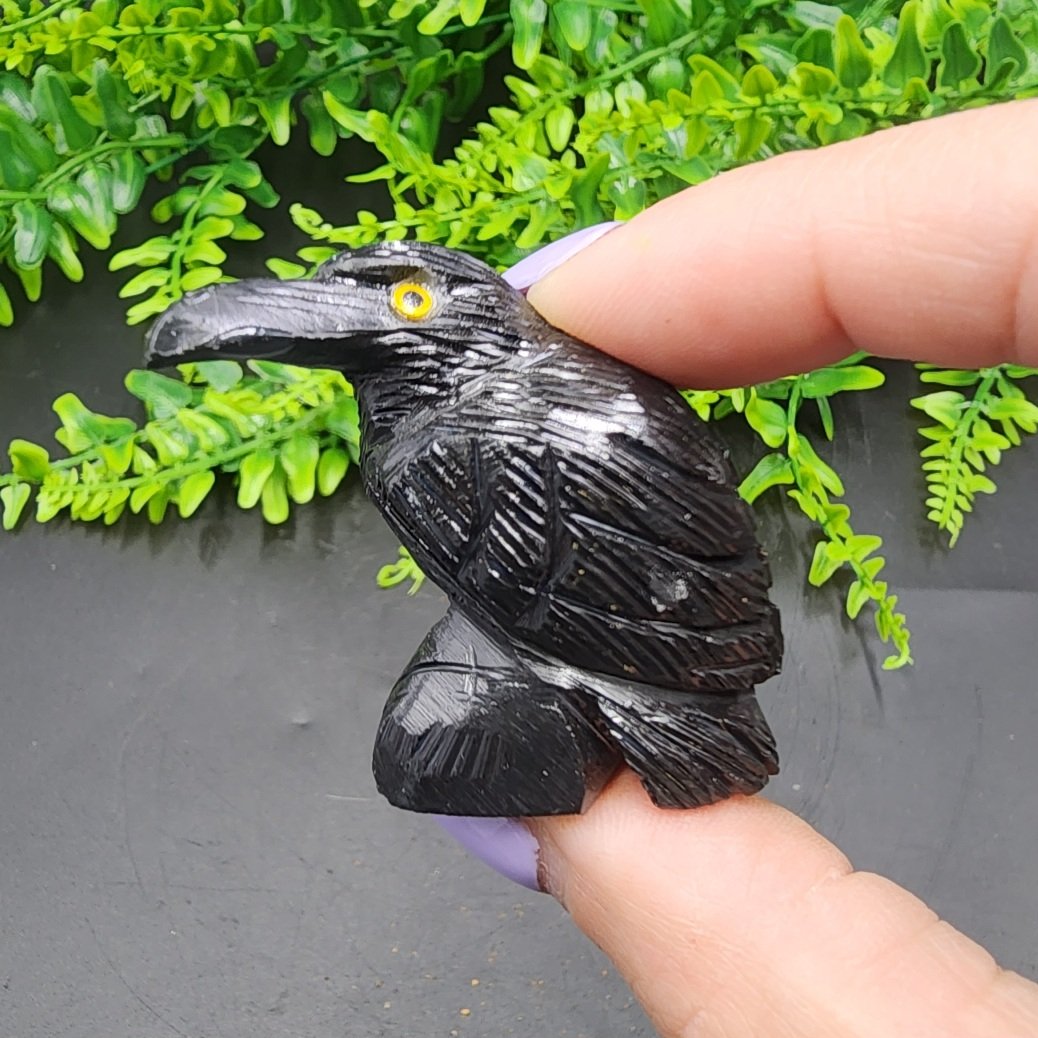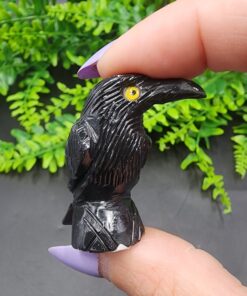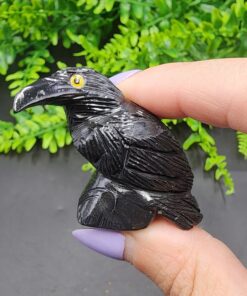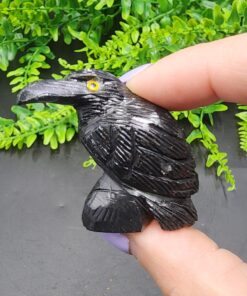Onyx Raven | Peru | SiO2 | Carved Onyx
$10.00
22 in stock
Though most commonly recognized in its black form, onyx can also display bands of white, brown, and red, creating mesmerizing natural patterns. The black variety, often enhanced through dyeing, is prized in jewelry and carvings for its sleek, enigmatic beauty. The name “onyx” comes from the Greek word ὄνυξ (onyx), meaning “claw” or “fingernail”—a reference to its pale bands resembling fingernail-like layers.
*
Onyx has been used since ancient times for amulets, cameos, and seals—valued by both the Greeks and Romans for its elegance and supposed protective properties. It’s often confused with obsidian (a volcanic glass), but unlike obsidian, onyx is a true mineral, composed of intergrown quartz crystals.
*
Onyx is deeply tied to themes of inner strength, grounding, and protection. It’s often seen as a stone that absorbs negative energy, helping to center and focus the mind in times of stress or grief. Pairing this with the raven—a creature cloaked in mystery and often symbolic of transformation, intelligence, and the unseen—the combination becomes rich with meaning. Both raven and onyx walk the line between light and dark, known and unknown. In mythology, ravens are messengers between realms, guides in the shadows. Similarly, onyx is said to anchor the soul during times of transition, making it a talisman for those exploring their inner world or standing at a crossroads.
| Weight | 0.0771617 lbs |
|---|---|
| Dimensions | 2.25 × 2.25 × 1.5 in |

